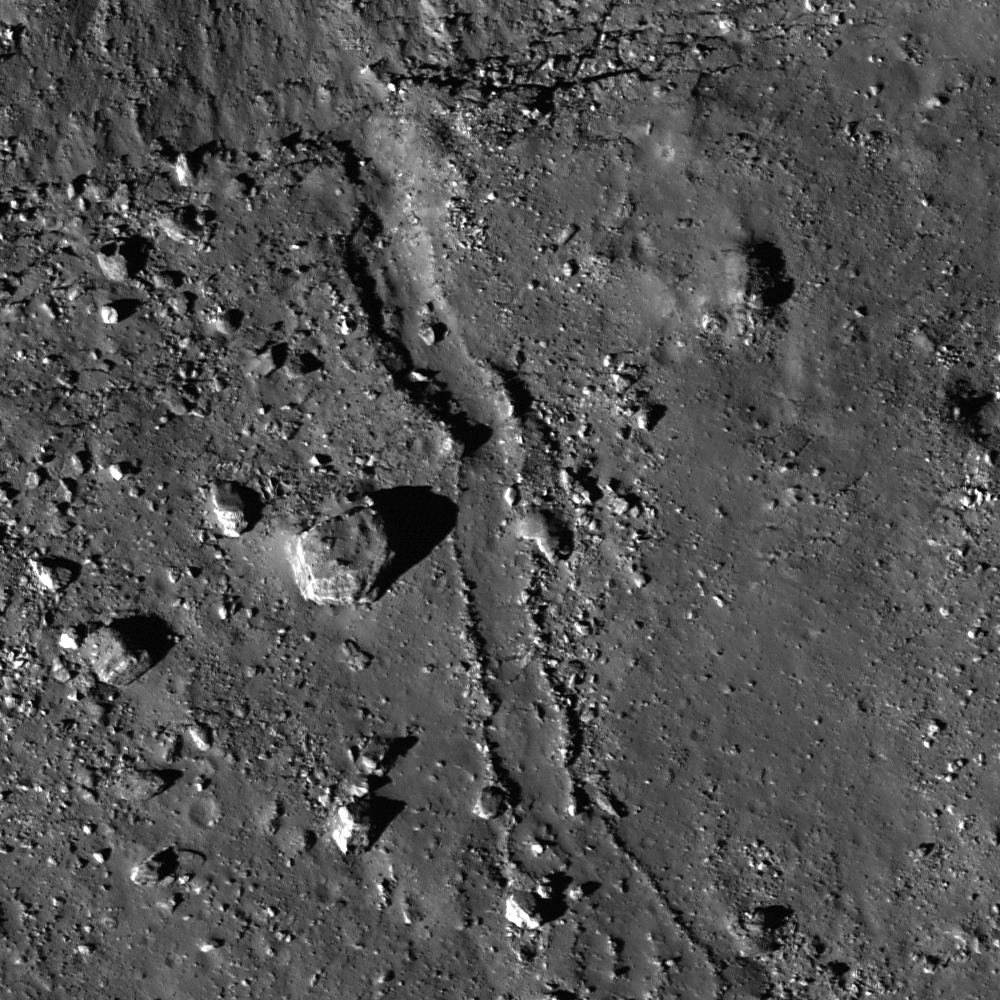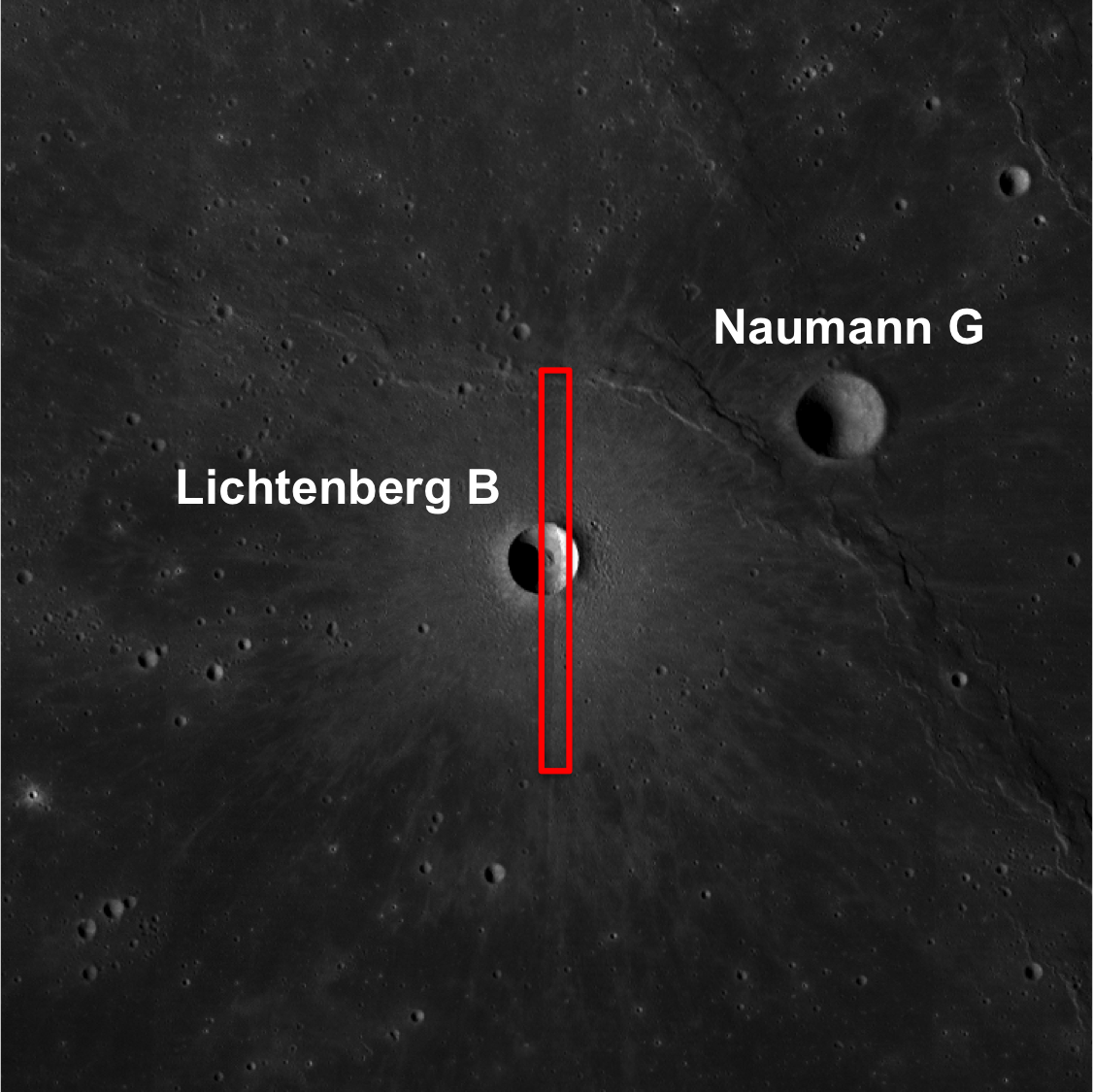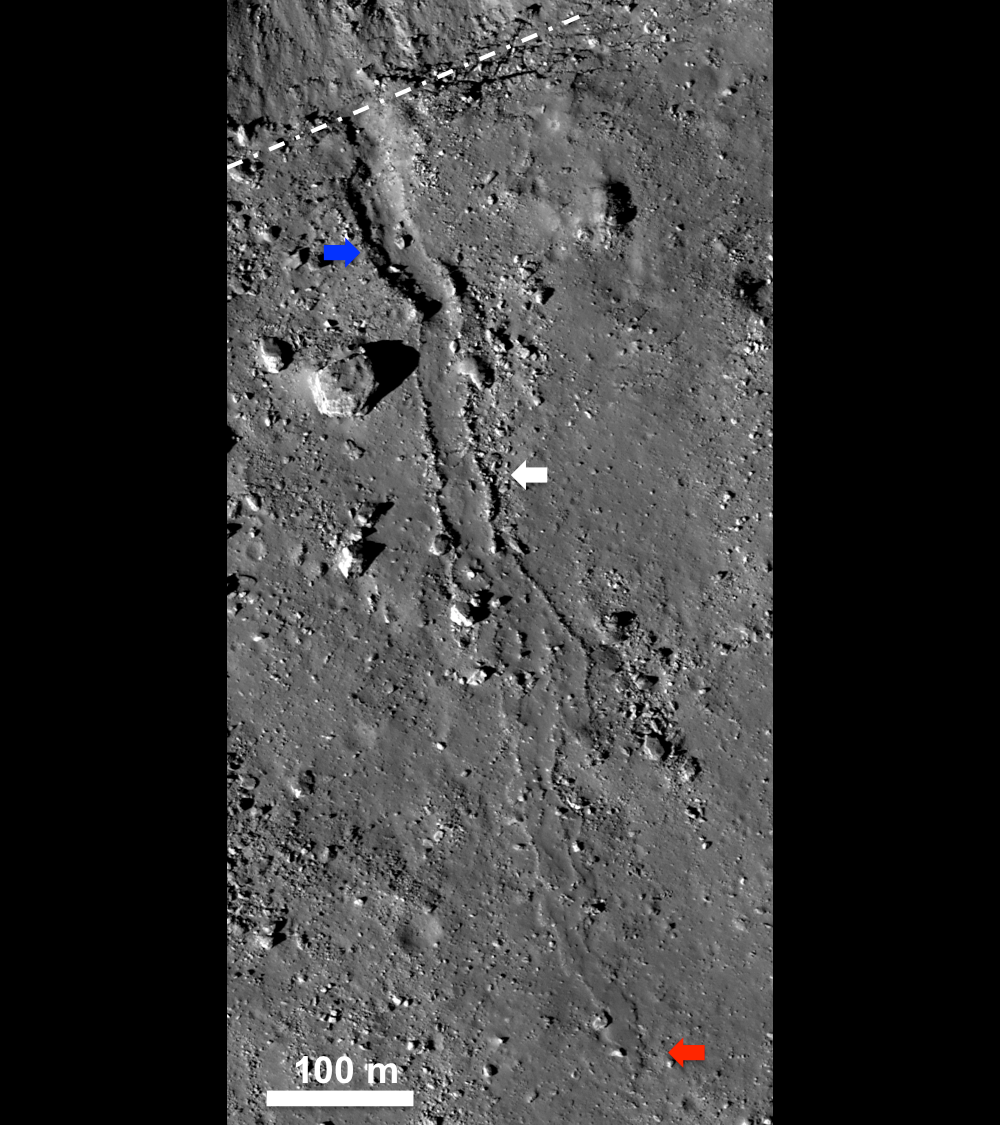
Lichtenberg B crater, located at 33.3°N, 61.5°W in northern Mare Procellarum, is a young lunar crater with a sharp rim, ejecta rays, and impact melt. Along the south rim, impact melt formed channels before cooling enough to come to a rest and solidify. In the Featured Image it appears that the flow of impact melt pushed boulders towards the edges of the flow, leaving behind an outline of its path. Other ejecta from the crater may have also played a role in forming the channel, since it is unclear if the amount of impact melt seen in the image is enough to have carved out the channel.
Explore the NAC frame of Lichtenberg B!
Related Posts:
Published by Sarah Braden on 30 November 2011

